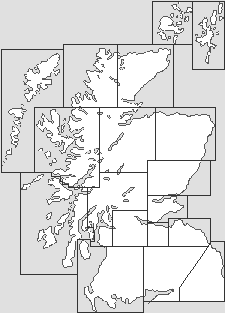 Edinburgh At Christmas |
The 5,000 year old Maeshowe on Orkney is the finest chambered tomb in North-West Europe. At sunset on the day of the Winter Solstice, 21 or 22 December, the sun briefly shines down the length of the 14.5m entrance passage and illuminates an area low on the rear wall of the main chamber. When you are living this far north, knowing exactly when the days are going to start getting longer again is an extremely important piece of information, and throughout history the Winter Solstice has been a time to celebrate one of the year's most important turning points.
There is no doubt that our pagan Celtic ancestors also celebrated the year's shortest day, and with the arrival in Scotland of the Vikings in the years after AD 800 the event was given a name we'd recognise today. Yule is a festival celebrated across much of northern Europe. The word probably comes from the Old Norse hjól meaning "wheel" and signifying an extreme point of the annual cycle.
December 25 was first referred to as Christ's birthday by the early Christian, Sextus Julius Africanus, in AD 221. It is generally accepted as a "traditional" rather than an actual date of birth, and many people feel that the date was partly chosen because it coincided with a wide range of celebrations in earlier cultures, including the Midwinter Solstice, Yule, Celtic Samhain, Roman Saturnalia, and the Roman Natalis Solis Invicti or "the birth of the unconquered sun." Presumably it was thought easier to convert people to Christianity if the new faith allowed them to retain their most important annual festival.
Christmas Day began to achieve Europe-wide prominence after Charlemagne's coronation as Holy Roman Emperor on 25 December 800, and some time later what was left of Saturnalia became the Twelve Days of Christmas. The word Christmas, a contraction of "Christ's mass", first appeared in writing in 1038, and by 1500 the festival was firmly established wherever the Roman Church held sway, including in Scotland.
Everything changed with the coming of the Reformation to Scotland in 1560. The radical brand of Presbyterian Protestantism that swept the country destroyed all trappings of "Popery", including statues, churches, and traditions. And prime amongst the traditions swept away in Scotland was "Christ's mass". It comes as something of a surprise to find that the abolition of Christmas in Scotland remained in force for the better part of 400 years. Christmas Day only became a Scottish Bank Holiday in 1958, and until the 1960s it was the norm for most people across the country to work normally if December 25 fell on a weekday.
But if the Reformation successfully swept away what it saw as "Popery", it was less successful in tackling the deeper, pre-Christian, layers of consciousness of Scots. The desire to celebrate the turning point of the year remained, and in the 1600s it took shape in Scotland with the celebration of Hogmanay on 31 December each year and Ne'erday on 1 January. This seems to have had its origins in the same midwinter traditions that led to 25 December being chosen as the date for Christmas. The Protestant Kirk took a predictably dim view of Hogmanay, with one churchman in 1692 commenting that: "It is ordinary among some plebeians in the South of Scotland to go about from door to door upon New-years Eve, crying Hagmane." But Kirk opposition stopped short of the formal legal prohibition that had been applied to Christmas, and Hogmanay (a word that might have French or Gaelic origins) began to take deep root in Scotland.
Today it is the norm for Scots to celebrate both Christmas and Hogmanay, but if we are honest, Christmas still has the feel of something slightly imported, something we do to fit in with the rest of the world: while Hogmanay remains the real deal, the truly Scottish celebration.
Visitors to Scotland over the mid-Winter period will find no shortage of Christmas decorations in towns and villages, and on individual homes. Meanwhile, programmes of Christmas events are increasingly a feature in the larger cities. Despite this, wherever you go in Scotland you are still likely to find people's undoubted enthusiasm for Christmas eclipsed by their enthusiasm for Hogmanay.
And for those wanting a glimpse of the earlier traditions on which all this is based, on the last Tuesday in January, Shetland celebrates the Viking festival of Up Helly-Aa, the traditional end of the Yule season, with a fire festival and torchlight procession. And, to bring things full circle, visitors to Orkney can still, weather permitting, see the sun shine down the length of the entrance passage at Maeshowe on the Winter Solstice as our ancestors did 5,000 years ago: or, unlike them, you can view it via webcam.



